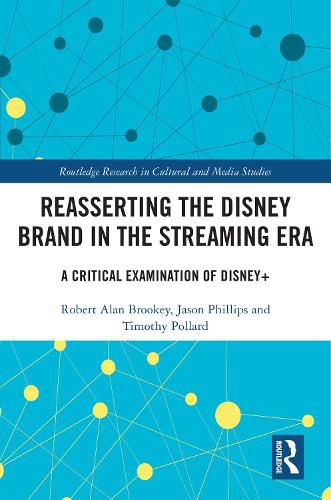Readings Newsletter
Become a Readings Member to make your shopping experience even easier.
Sign in or sign up for free!
You’re not far away from qualifying for FREE standard shipping within Australia
You’ve qualified for FREE standard shipping within Australia
The cart is loading…






Reasserting the Disney Brand in the Streaming Era investigates the evolution of the Disney brand at a pivotal moment - the move from content creation to acquisition and streaming - and how the company reasserted its brand in a changing marketplace.
Exploring how Disney's acquisition of Pixar, Marvel, Lucasfilm and Fox positioned the company to launch the Disney+ streaming service, the chapters look at the history of those acquisitions, and the deployment of the content, brands, and intellectual property from those acquisitions, through an analysis of the original content that appeared on Disney+. Offering a focused investigation of how the content offered from these various media brands was adapted for Disney+ so that it reflects the Disney brand, the authors illustrate through close textual analysis how this content reflects elements of the "Classic Disney Style." The analysis positions these texts in relation to their industrial contexts, while also identifying important touchstone texts (both television and film) in Disney's catalog.
This comprehensive and thoughtful analysis will interest upper-level students and scholars of media studies, political economy, Disney studies, media industries and new technology.
$9.00 standard shipping within Australia
FREE standard shipping within Australia for orders over $100.00
Express & International shipping calculated at checkout
Reasserting the Disney Brand in the Streaming Era investigates the evolution of the Disney brand at a pivotal moment - the move from content creation to acquisition and streaming - and how the company reasserted its brand in a changing marketplace.
Exploring how Disney's acquisition of Pixar, Marvel, Lucasfilm and Fox positioned the company to launch the Disney+ streaming service, the chapters look at the history of those acquisitions, and the deployment of the content, brands, and intellectual property from those acquisitions, through an analysis of the original content that appeared on Disney+. Offering a focused investigation of how the content offered from these various media brands was adapted for Disney+ so that it reflects the Disney brand, the authors illustrate through close textual analysis how this content reflects elements of the "Classic Disney Style." The analysis positions these texts in relation to their industrial contexts, while also identifying important touchstone texts (both television and film) in Disney's catalog.
This comprehensive and thoughtful analysis will interest upper-level students and scholars of media studies, political economy, Disney studies, media industries and new technology.